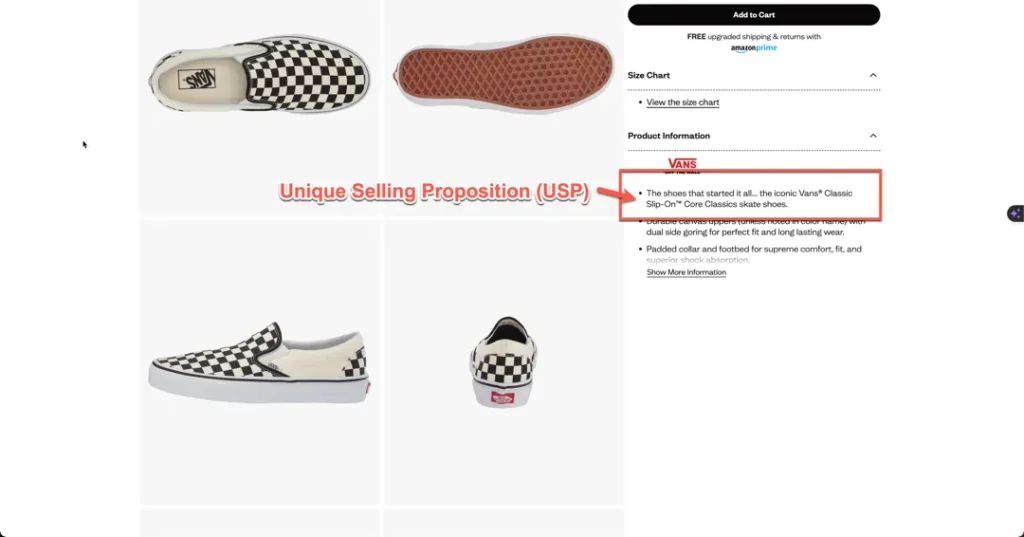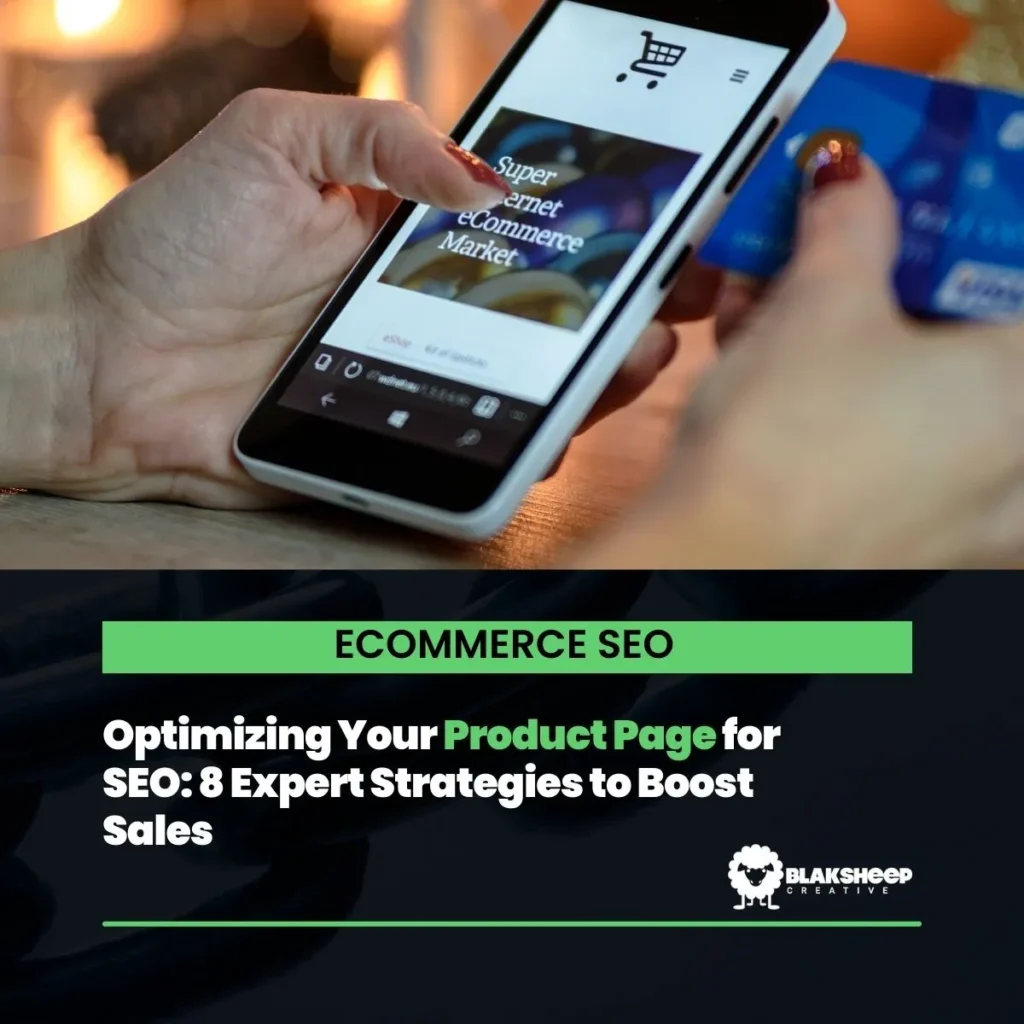In the dynamic world of e-commerce, having a product page finely tuned for SEO isn’t merely about securing a prime spot in search engine rankings.
It’s about crafting a digital storefront that’s so compelling it becomes irresistible to your target audience. But how do you go about achieving this?
In this comprehensive guide, we’ll walk you through eight crucial strategies to transform your product page into a sales-driving powerhouse.
| Strategy | Description |
|---|---|
| Unveil the Unique Selling Proposition (USP) of Your Product | Showcase what sets your product apart from the competition in a compelling way. |
| Craft Compelling and Concise Product Descriptions | Provide clear and engaging information about your product to inform potential buyers. |
| Optimize High-Quality Product Images | Enhance user experience and SEO by using high-resolution images with descriptive tags. |
| Leverage Customer Reviews to Build Trust | Encourage customer reviews to establish credibility and improve SEO with user-generated content. |
| Ensure Mobile Responsiveness | Create a responsive design for a consistent user experience across all devices. |
| Implement Schema Markup | Enhance search engine listings with rich snippets using structured data. |
| Address Common Questions | Anticipate and answer customer queries with a dedicated FAQ section. |
| Create Clear Calls to Action (CTAs) | Guide users toward making a purchase with prominent and compelling CTAs. |
1. Unveil the Unique Selling Proposition (USP) of Your Product
First impressions matter, especially in the online shopping realm. Start by prominently showcasing the unique selling points of your product. What sets it apart from the competition? Is it the quality, design, or a particular feature?

Craft a concise, attention-grabbing headline that encapsulates your product’s USP. This entices visitors and helps search engines understand the essence of your offering.
Ready to make your product stand out? View our copywriting services and learn how we can help you craft a compelling USP that grabs your audience’s attention.
2. Craft Compelling and Concise Product Descriptions
Detailed product descriptions are the lifeblood of your product page. Provide potential buyers with all the essential information they need in a clear, concise, and engaging manner. Utilize descriptive language that appeals to your target audience.

Remember, a well-informed customer is more likely to make a purchase.
3. Optimize High-Quality Product Images
A picture is worth a thousand words, and this couldn’t be truer for e-commerce. High-resolution images enhance the user experience and convey trust and professionalism.

Optimize your product images for performance and SEO by using descriptive file names and alt tags. These tags provide valuable information to search engines and improve your chances of appearing in image search results.
4. Leverage Customer Reviews to Build Trust
Customer reviews are powerful trust signals. Encourage satisfied customers to leave reviews on your product page.

User-generated content enhances your credibility and provides fresh, relevant content that search engines love.
Respond to positive and negative reviews, demonstrating your commitment to customer satisfaction.
Boost your credibility with customer reviews. Visit our reputation management service page to learn how we can help you implement a review strategy that works.
5. Ensure Mobile Responsiveness
In today’s mobile-centric world, your product page must be responsive to different screen sizes.
Google prioritizes mobile-friendly websites in its search results, so it is imperative to ensure your page looks and functions flawlessly on smartphones and tablets.
A responsive design guarantees a consistent user experience across all devices, boosting your SEO rankings and customer satisfaction.
Is your website mobile-friendly? Visit our eCommerce website design services page to learn how we can help you capture mobile users.
6. Implement Schema Markup
Schema markup, also known as structured data, is a potent tool to provide search engines with detailed information about your product. Here’s an example of product schema:
{
“@context”: “http://schema.org/”,
“@type”: “Product”,
“name”: “Example Product Name”,
“image”: “https://www.example.com/product-image.jpg”,
“description”: “This is a wonderful example product with detailed information.”,
“brand”: {
“@type”: “Brand”,
“name”: “Example Brand”
},
“aggregateRating”: {
“@type”: “AggregateRating”,
“ratingValue”: “4.5”,
“reviewCount”: “25”
},
“offers”: {
“@type”: “Offer”,
“priceCurrency”: “USD”,
“price”: “199.99”,
“availability”: “http://schema.org/InStock”,
“seller”: {
“@type”: “Organization”,
“name”: “Example Seller”
}
}
}
In this example:
@contextspecifies the context for the schema, which is “http://schema.org/” for structured data.@typeindicates that this is a Product schema.nameis the name of the product.imageis the URL of the product image.descriptionprovides a brief description of the product.branddefines the brand of the product.aggregateRatingprovides information about the product’s aggregate rating and review count.offersdescribes the pricing and availability of the product.priceCurrencyspecifies the currency in which the price is presented.priceis the price of the product.availabilityindicates that the product is in stock.selleridentifies the organization or seller of the product.
You can customize this markup by replacing the sample information with the details of the actual product you want to mark up on your website. Implementing structured data like this can enhance your product listings in search engine results and improve click-through rates.
Schema markup plays a crucial role in enhancing search engine listings, especially as search evolves toward answering specific user queries directly. Learn how Answer Engine Optimization (AEO) is shaping the future of search.
Maximize your SEO with structured data. Contact our blog post, “What is Schema Markup? Introducing SEO Schema Markup to Expand Your SEO Opportunities,” to learn how to leverage this often overlooked ranking booster.
7. Address Common Questions
Anticipate and answer common questions potential customers may have about your product. This provides valuable information and improves your SEO by targeting long-tail keywords.
Consider creating a dedicated FAQ section on your product page to address queries comprehensively.
8. Create Clear Calls to Action (CTAs)
Don’t leave your visitors guessing about what to do next. Incorporate clear and compelling calls to action (CTAs) strategically throughout your product page.

Use action-oriented phrases like “Buy Now,” “Add to Cart,” or “Get Started” to guide users toward making a purchase. Make these CTAs visually prominent to grab attention.
Ready to drive more sales? Read our recent blog post to learn how to create the calls to action that your readers can’t resist!
In conclusion, optimizing your product page for SEO goes beyond search engine rankings; it’s about crafting a persuasive digital storefront that converts visitors into customers.
Implementing these eight expert strategies will boost your search engine visibility and enhance your audience’s overall shopping experience.
Remember, an SEO-optimized product page isn’t just about attracting traffic; it’s about driving sales and fostering customer loyalty in the competitive world of online commerce.
Ready to Elevate Your Product Page to New Heights?
At BlakSheep Creative, we’re not just SEO experts and top-notch copywriters; we’re your partners in success. Our team is ready to transform your product page into a sales-driving powerhouse, ensuring it outperforms the competition.
Let’s collaborate to optimize your product page, boost your search engine rankings, and drive more sales. Contact us today for a personalized consultation and take the first step toward digital success.
Don’t settle for the ordinary. Choose BlakSheep Creative and watch your product page soar to extraordinary heights. Your customers deserve the best, and we’re here to deliver it. Fill out the form for a free consultation today!
















































